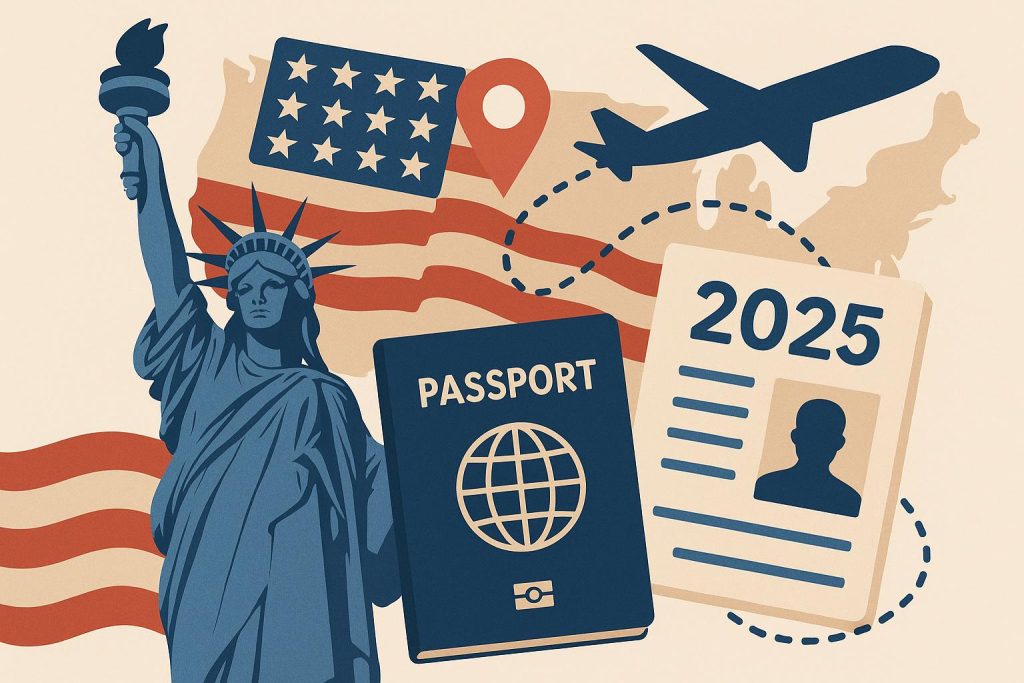Immigrating to the United States is a dream for millions around the world, but the process can feel overwhelming—especially with the constant policy changes, paperwork requirements, and long wait times. Whether you’re pursuing family-based immigration, a work visa, or humanitarian relief, understanding the pathway ahead is the key to a smoother and more confident experience.
In this guide, we’ll break down everything you need to know about the U.S. immigration journey in 2025, including tips, common mistakes to avoid, and the steps you can take to move forward with clarity.
Why U.S. Immigration Still Matters in 2025
Despite global uncertainty, the United States continues to be one of the most attractive destinations for people seeking safety, opportunity, and a stable future. With a strong job market, world-class education system, and diverse communities, the country offers a blend of economic and personal growth opportunities that many immigrants hope to tap into.
But the legal process isn’t always simple—and that’s where understanding the major milestones becomes crucial.
Key Stages of the U.S. Immigration Process
While everyone’s immigration journey is different, most applicants go through a series of predictable steps. Below are the major stages you should be aware of.
1. Determining Your Eligibility
Every successful immigration journey starts with knowing which pathway fits your situation. Common categories include:
- Family-based immigration
- Employment-based visas
- Humanitarian relief (asylum, refugee status)
- Investment-based immigration (EB-5)
- Diversity Visa Lottery
Each category has completely different requirements, timelines, and documentation.
2. Filing a Petition
For many applicants, the first formal step involves a sponsor (either a U.S. citizen, permanent resident, or employer) filing a petition on your behalf. This petition is then reviewed by USCIS before you can move to the next stage.
The waiting period can range from a few months to several years depending on your category.
3. Transitioning to Permanent Residency
Once your petition is approved and a visa number becomes available, you’ll need to move toward securing permanent residency.
For individuals already in the U.S., this typically involves the Adjustment of Status process—an important legal step that allows certain applicants to apply for a green card without leaving the country. Working with an experienced immigration attorney, such as those at Adjustment of Status, can help ensure that your paperwork is accurate and your case remains on track.
Common Challenges Immigrants Face Today
Even with a straightforward case, many applicants encounter bumps in the road. Here are some of the most common obstacles:
● Extensive Documentation
Missing documents or inconsistent information is one of the biggest reasons applications get delayed or denied.
● Policy Changes
Immigration laws evolve frequently, and staying updated is essential. A form that was acceptable one year may be outdated the next.
● Administrative Delays
Backlogs remain a challenge across many immigration categories, making patience and planning vital.
● Interview Anxiety
The immigration interview can be intimidating, but proper preparation makes a world of difference.
How to Strengthen Your Immigration Application
While every case is unique, the following best practices can significantly increase your chances of success:
✔ Stay Organized
Use checklists, folders, and digital backups to keep your documents neat and accessible.
✔ Double-Check All Forms
Small errors—like typos or incorrect dates—can trigger unnecessary delays.
✔ Be Honest
Never hide information or submit false documents. Transparency is essential for approval.
✔ Seek Professional Guidance
Whether you’re applying for a visa or going through Adjustment of Status, working with a qualified immigration attorney—like those available at Adjustment of Status—can help you navigate complexities with confidence.
Final Thoughts
The U.S. immigration process may feel complicated, but it’s far from impossible. With preparation, patience, and the right professional support, you can move forward with clarity and optimism.
Whether you’re reuniting with loved ones, building a career, or starting a new life, the journey is worth it—and understanding the process is the first step toward achieving your American dream.




